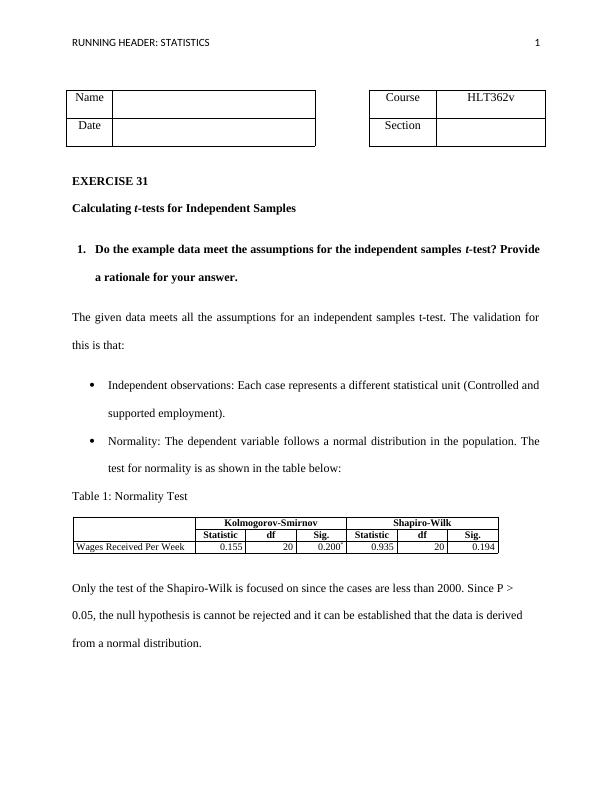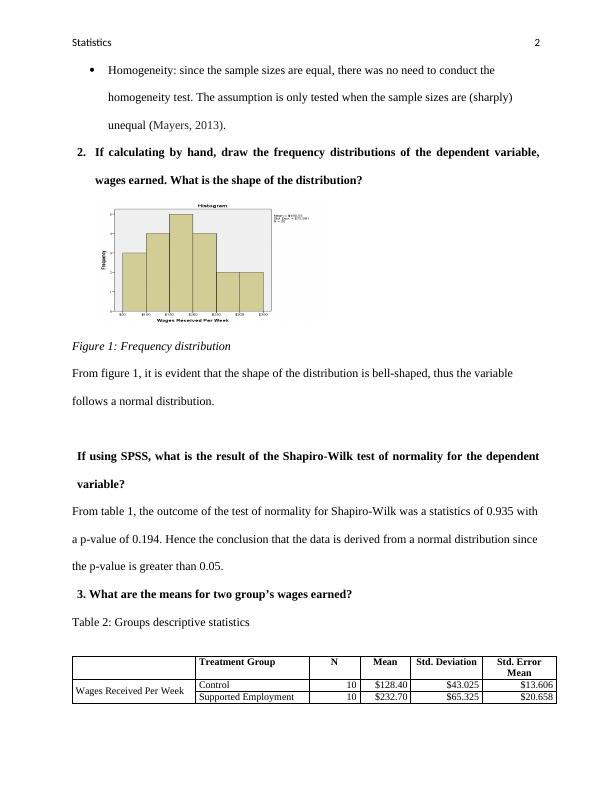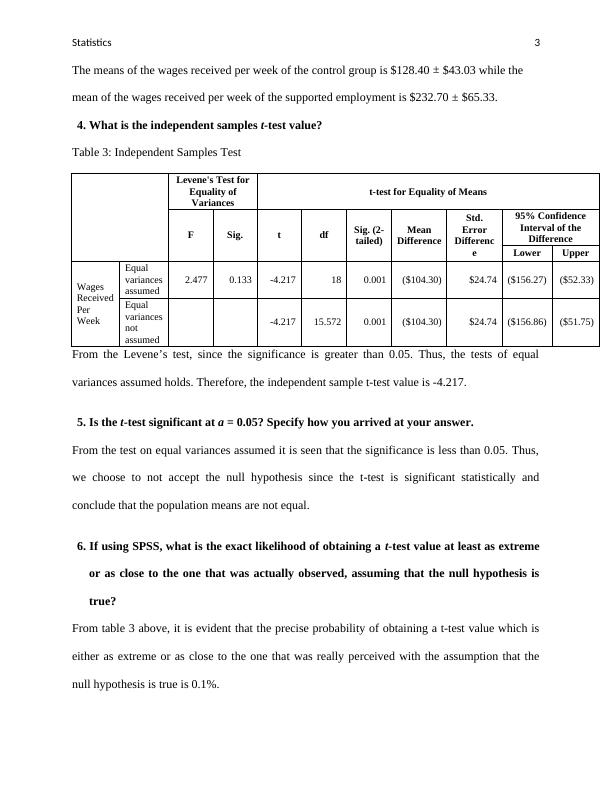Calculating t-tests for Independent and Paired Samples - Exercise 31 and 32
This assignment involves calculating t-tests for independent samples and analyzing the results to determine the impact of supported employment vocational rehabilitation on wages earned.
9 Pages1866 Words331 Views
Added on 2023-06-08
About This Document
Exercise 31 and 32 of HLT362v course covers calculating t-tests for independent and paired samples. The exercises provide solved examples with assumptions, means, t-test values, and interpretations. The impact of supported employment vocational rehabilitation on wages earned and rehabilitation on emotional distress levels are also discussed. Weaknesses of the design are also highlighted.
Calculating t-tests for Independent and Paired Samples - Exercise 31 and 32
This assignment involves calculating t-tests for independent samples and analyzing the results to determine the impact of supported employment vocational rehabilitation on wages earned.
Added on 2023-06-08
ShareRelated Documents
End of preview
Want to access all the pages? Upload your documents or become a member.
Independent and Paired Samples T-Test: Assumptions, Means, and Interpretation
|7
|1769
|496
Quant Design And Analysis Report
|8
|915
|19
Statistics: Analysis of Employee Engagement and Workload at Indigo Insurance Company
|6
|1012
|370
MAT5212 | Mathematical Statistics | Assignment
|13
|1612
|19
Test for Difference in Variability in Waiting Times in Bank 1 and Bank 2
|5
|708
|36
Working with Inferential Statistics
|7
|879
|480



